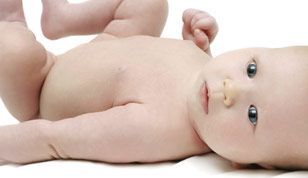Blog Categories
Search Blog
Blog Categories
Torticollis Awareness
Does your baby always look in the same direction?
Does your baby tilt his/her head to one side?
Does your baby have a flat spot on his/her head?
If so, read on!
What is Torticollis?
The term torticollis means “twisted neck” and is usually noticed in infants from birth to a few months of age. The child will present with their head tilted to one side with their chin turned to the opposite side. 1 in 250 children are born with this form of torticollis, which is called congenital torticollis.
Congenital torticollis is a result of a shortened neck muscle, which occurs due to the neck positioning in utero or from damage to the neck muscles during childbirth. The neck muscle that is responsible for the tilting of the head to one direction and the rotation of the head to the opposite direction is called the sternocleidomastoid muscle. This muscle runs from the collarbone to behind the ear.
Torticollis is a diagnosis that is often missed, as the signs can be quite subtle early on. Further, once diagnosed, the child may have developed secondary impairments due to this twisted neck position. By diagnosing and treating your child early, you can prevent any unwanted complications.
Complications if left untreated:
- Flat spot – positional plageocephaly
- Gross motor delays – delay in acquiring milestones such as rolling, sitting, crawling and walking
- Decreased range of motion of the neck – inability to turn head and look in all directions
- Decreased strength of neck muscles
How to treat it:
Congenital torticollis can easily be treated with physiotherapy. A qualified physiotherapist will assess your child, perform hands on manual therapy and teach you home exercises. Focus will be placed on:
- Stretching the tight muscles
- Strengthening the weak muscles
- Promoting acquisition of gross motor milestones
- Positioning techniques
References
Luxford, B.K., Hale, L., Piggot, J. 2009. The physiotherapy management of infants with congenital muscular torticollis: A survey of current practice in New Zealand. New Zealand Journal of Physiotherapy. Vol 37 (3).
Robertson, R. 2011. Supine Infant Positioning-Yes, but There’s More to it. The Journal of Family Practice. Vol. 60 (10), pp. 605-8.
Van Vlimmeren, L.A., Helders, P.J.M., Adrichem N.A and Engelbert, R.H.H. 2006. Torticollis and plagiocephaly in infancy: Therapeutic strategies. Pediatric Rehabilitation. Vol. 9 (1), pp. 40-46.






